Fruits are normally high in fibre and low in calories, which makes them great foods for weight loss and/or weight management.
When trying to lose some belly fat, most people’s biggest challenge is giving up those yummy deserts, or maybe someone in the office brought in donuts for the team today, or those impulsive candy bar buys at the supermarket checkout, or the obstacle course our health goals need to severe through at holiday times.
Let’s meet your weight training buddy, fruit. Fruit doesn’t just have the sweetness we’re craving, but unlike those tempting processed treat, they have plenty of natural nutrients as well. Hence many people call them Mother Nature’s candy.
In fact, health experts, like the US Department of Agriculture (USDA)‘s MyPlate app, recommends we fill half our plate with fruits and veggies for optimal health. Although whole fruits are healthy, all foods contain calories, so we need to keep that in mind when attempting to lose that belly fat. In the new, popular ketogenic diet, also states some fruits are better than others due to its strict carbohydrate restrictions. People with type 2 diabetes, although it’s a myth that fruits are unhealthy, need to monitor their intake of fruits due to their high carb count to decrease their likelihood of a spike in blood sugar.
The correct number of fruits may differ from person to person, but the fact still remains, fruits are a healthy addition to any wight loss plan. “When you’re trying to lose weight, an important aspect is feeling full for longer, but also enjoying what you eat, that’s a huge part of sustainable, healthy weight loss”, says Martha Lawder, RDN, a clinical assistant professor at the University of the Pacific in Sacramento, California. “Fruit can give you that fullness because of the fibre, but also, it’s delicious. That makes it a great go-to option.”
So, let’s have a look at these 7 best fruit choices to aid in weight management, or if we simply want to do our bodies some good, along with some ideas on how to enjoy them
High-Fiber Apples
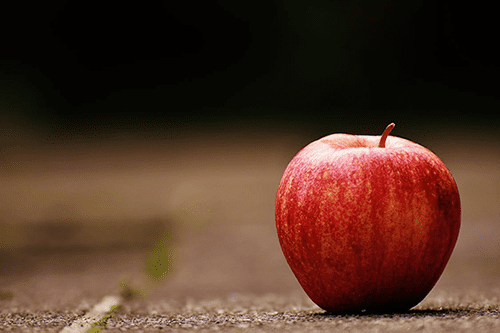
As per Atlanta-based Kristen N Smith, PhD, RDN, LD, founder of 360 Family Nutrition, Apples are high in fibre but low in calories. This makes them a wise food choice for those trying to manage their weight.
“Foods with increased fibre can help slow digestion and keep you feeling satiated for longer periods of time”, Smith says, “For optimal satiety and fibre intake, keep the skin on.”
A medium-sized apple contains 4.4g of fibre, which is approximately 17 percent of the daily value (DV), with only 94.6 calories, according to the USDA.
According to a study posted on the National Library of Medicine (NLM) there is a direct connection between consuming fibre-rich foods and weight management.
Ideas to Enjoy High-Fibre Apples
Topping our favourite salad with Apples slices, dipping them in Greek yoghurt as a mid-morning snack or adding them to our morning oatmeal for some natural sweetness are some suggestions from Smith.
According to the USDA, Greek yoghurt provides us with 16,1g of protein per 156g container of the plain, no fat variety and thanks to the protein, it makes for a good weight loss companion, noted in a research review by Oxford Academic. Pairing our Apple with our morning oats is also great for our waistlines, considering they offer an extra helping of fibre. According to the USDA, each half cup of oats serving provides us with 4g of fibre, which is 15 percent of the DV.
Should we prefer a no-frills snack, we can simply grab one and go, as their portability is certainly part of their appeal.
Raspberries
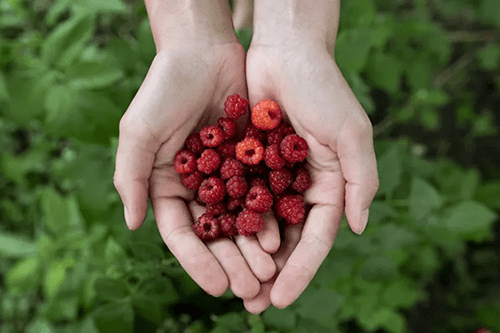
“Raspberries are one of the best sources of fibre, and because of their sweetness, they help satisfy those sugar cravings”, Smith says. Raspberries offer fibre as well as antioxidants, which combat something called free radicals in the body research posted on the NLM has shown. According to the USDA, 1 cup of Raspberries contain 8g of fibre, making them an excellent source.
Berries are often categorized as superfoods because of their high levels of vitamin C and E, which are antioxidants that help fend off chronic diseases according to Everyday Health. A cup of Raspberries contains 32,2mg of vitamin C and 1.07mg of vitamin E according to the USDA.
Ideas to Enjoy Raspberries
Although Raspberries make a good addition to salads and yoghurts, Smith points out that they also make for great snacking on their own. So, take a break and have a handful, and enjoy them slowly to boost the mindful eating plus we’ll get the sweetness.
Whole Oranges
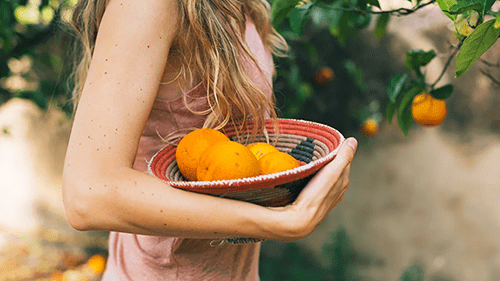
Whole Oranges, not juice, are weight loss friendly. A medium-sized Orange provides 2,8g of fibre according to the USDA, but that only applies when eating the fruit as a whole, so keep in mind that we are eating to trim those waistlines.
“Avoid Orange juice, and eat a whole Orange or cut-up Orange instead”, Smith says, “Also, Oranges are packed vit vitamin C, which offer several health benefits, like boosting your immune system, helping your body make collagen and aiding with iron absorption.” According to the USDA, one Orange contains 82,8mg of vitamin C.
Ideas to Enjoy Oranges
Whip up an Orange salsa, Smith suggests, and use it to top a chicken breast or a piece of fish to get all the vitamin C and a protein fix all in one go. Making sure we keep up on our protein requirements is good in aiding with the weight loss, according to a study conducted by the by the NLM, because it helps us feel fuller for longer. Harvard Medical School notes that we need 0,8g of protein per kilogram of body weight per day. So, an averaged person weighing 68kg would need to consume 54g of proteins daily.
Mangos
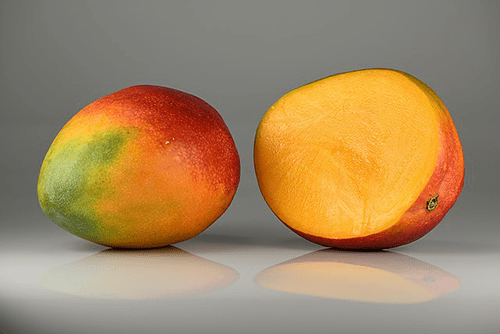
Mangoes are a metabolism-boosting treat, and talk about a major sweetness superhero. “Mangoes offer that no-sugar fix you want, and they can even improve your metabolism and lowers inflammation”, Lawder says. A study conducted by American Federation of Societies of Experimental Biology, found that Mangoes lowered blood pressure and helped with blood sugar regulation, both of which play a role in the metabolism. It also improved inflammation markers; the study noted.
And, of course, Mangoes offer a nice helping of weight-supportive fibre. According to the USDA, one Mango contains 5,38g of fibre.
Ideas to Enjoy Mangos
“After cutting the Mango into slices or pieces, sprinkle a little chilli powder and lime juice on top”, Lawder says, “That will provide a flavourful snack, plus, the kick may boost this snack’s weight loss potential.” A study posted on the NLM found that the active ingredient in chilli peppers, capsaicin, may accelerate weight loss.
Avocados
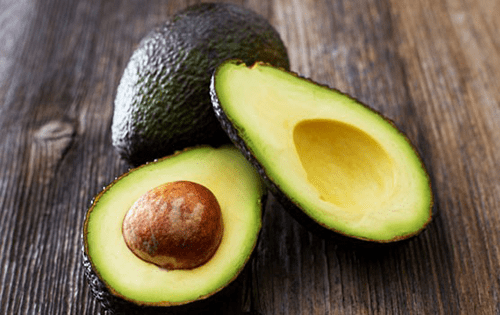
Avocados contain good fats that help us feel fuller for longer. “Like tomatoes, many don’t think of Avocados as a fruit. Although they might look odd in a fruit bowl, Avocados can be a top addition when it comes to weight loss goals”, Lawder says. That’s because they are one of the fattiest plant foods available, and the USDA notes that about 82 percent of an Avocado’s calories comes from fat, the good kind.
“The monosaturated and polyunsaturated fatty acids in Avocados have been linked to better heart health, and they increase your satiation levels by a large degree”, Lawder says. Fibre also contributes to Avocados’ satiation effect. According to the USDA, one Avocado contains 13,5g of fibre.
A study posted in the Multidisciplinary Digital Publishing Institute, showed that overweight and obese participants who ate Avocados as part of a meal, felt less hungry after six hours, compared to those who’d eaten a low-fat, high-carb meal.
Ideas to Enjoy Avocados
“After cutting the ripe fruit carefully, throw the pieces into the blender to create a green smoothie”, Lawder suggests. The texture of the Avocado creates a creamy, thick drink, like a milkshake, and you can add in all sorts of nutrition standouts, like bananas, kale, chard and Greek yoghurt.
Bananas
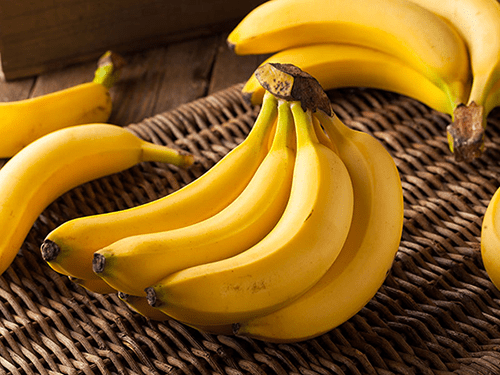
Bananas also help you feel fuller for longer, thanks to their resistant starch. “Bananas often get badmouthed for being ‘too high’ in carbs,” says Kelsey Kunik, RDN, a dietician based in Saginaw, Michigan and founder of Graciously Nourished. “Because fruits are full of natural sugars, which translates into carbs, it’s a common myth that they contribute to weight gain”, she adds. People on a low-carb diet, like keto, are often advised to avoid fruits like Bananas.
In reality, part of the carbohydrates from bananas are in the form of the fibre’s pectin and resistant starch. Both of these can actually help regulate blood sugars, not spike it. Greener Bananas have more resistant starch. In very ripe Bananas, the starch has been converted into sugar. That’s important to know because resistant starch earns their label because they resists digestion, research by the British Nutrition Foundation has noted, and that’s a good thing because it functions like fibre to slow digestion. This keeps us feeling fuller for longer and also keeps the blood sugars steady so we maintain energy. That can keep us from a blood sugar slump that will have us reaching for those sweet treats to perk us back up.
Ideas to Enjoy Bananas
There’s good reason why Bananas are such a go-to ingredient for smoothies. They blend well and add that tropical flavour to any mix. For added weight loss clout, throw in a small handful of nuts, which research posted on the NLM has found aids in weight loss, mainly because they help keep us feeling fuller for longer, thanks to their healthy fat and protein content.
Pineapple
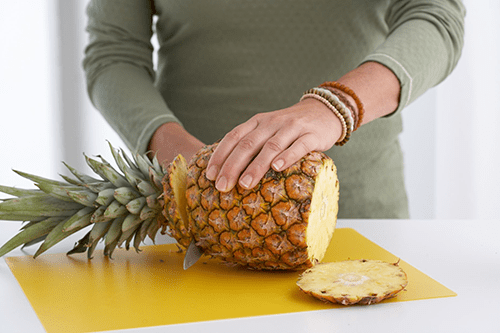
Pineapple not only boosts hydration and satiety, they also offer a big burst of vitamin C. According to USDA, one cup of Pineapple chunks provides 78,9mg of vitamin C. “Pineapples have a high water content, and hydration has shown in numerous studies to aid with weight loss”, says Kunik.
A study posted on the NLM notes, that adding water-rich foods, such as fruits and vegetables, to diets are associated with weight loss, even when participants were not instructed to restrict calories.
Ideas to Enjoy Pineapple
Even if you’re a firm NO to the “Pineapple on pizza” question, “Pineapple does pair well with savoury foods and dairy”, says Kunik. For example, blend some Pineapple into some cottage cheese for a snack. Cottage cheese is a top choice because it’s high in protein, the amount depending on brand. According to the USDA, one cup of the low-fat variety contains 24,2g of protein.
With so many different fruit options, it’s easy to play around with flavour combinations, creating a sweet treat when we need it, and enjoying all the fibre and nutrients make them an ideal addition to our weight loss efforts.
Munchies4U does not provide professional dietary advice. If you or someone you care for has special dietary requirements, medical needs or an eating disorder, please seek advice from a registered healthcare professional.